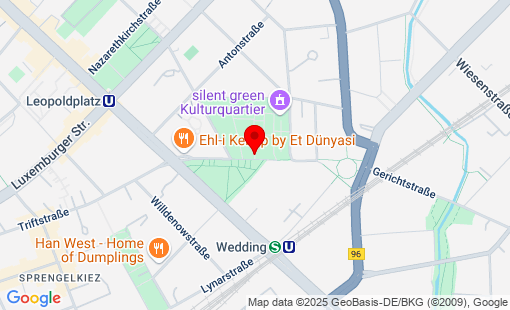Germany
Berlin-Wedding, Urnenfriedhof Gerichtstraße
Total Occupation: 210 fatalities
Total Occupation: 210 fatalities
Berlin's first municipal cemetery was established on the current site of the Gerichtstraße Urn Cemetery in 1828; it had to be extended as early as 1831. in 1879 this cemetery was closed due to full occupancy and from 1903 part of the original cemetery was converted into a park. Shortly after cremation was permitted in Prussia in 1911, Berlin's first crematorium was inaugurated here in 1912, with an urn hall in neoclassical style; the cemetery was redesigned in the same year. After a major modernization and expansion between 1998 and 2000, despite known overcapacity, the crematorium was closed by the city of Berlin the following year. The new operator is silent green Kulturquartier; cultural events have been held there since 2015.
There are several graves of honor of the state of Berlin in the cemetery:
- Emanuel Mendel (1839-1907), neurologist, psychiatrist and politician - Emil Meyer (1897-1985), politician and city elder - Siegfried Ochs (1858-1929), choirmaster and composer ("Dank sei Dir, Herr") - Hugo Preuß (1860-1925), Politician, co-founder of the DDP, drafted the Weimar constitution - Max Sievers (1887-1944), freethinker and Nazi resistance fighter - Louis Toaillon (1862-1919), sculptor and medalist (e.g. statue of Robert Koch in front of theAugust von Wassermann (1866-1925), immunologist and bacteriologist The neoclassical tomb of the Gutmann banking family, erected in 1916, is also located here; Eugen Gutmann (1840-1925) was of decisive importance for the founding of Dresdner Bank in 1872. Also noteworthy is the tomb for Carl and Johanna Borchert from 1915, consisting of four Doric columns with an urn on a stele in the middle. The crematorium and the cemetery are listed buildings. There was once a war cemetery in the cemetery, but the graves were moved to the cemetery at Plötzensee. Today there is still a war victim's grave in the Gerichtstraße cemetery (Martin Bayer, 24.06.2020)
